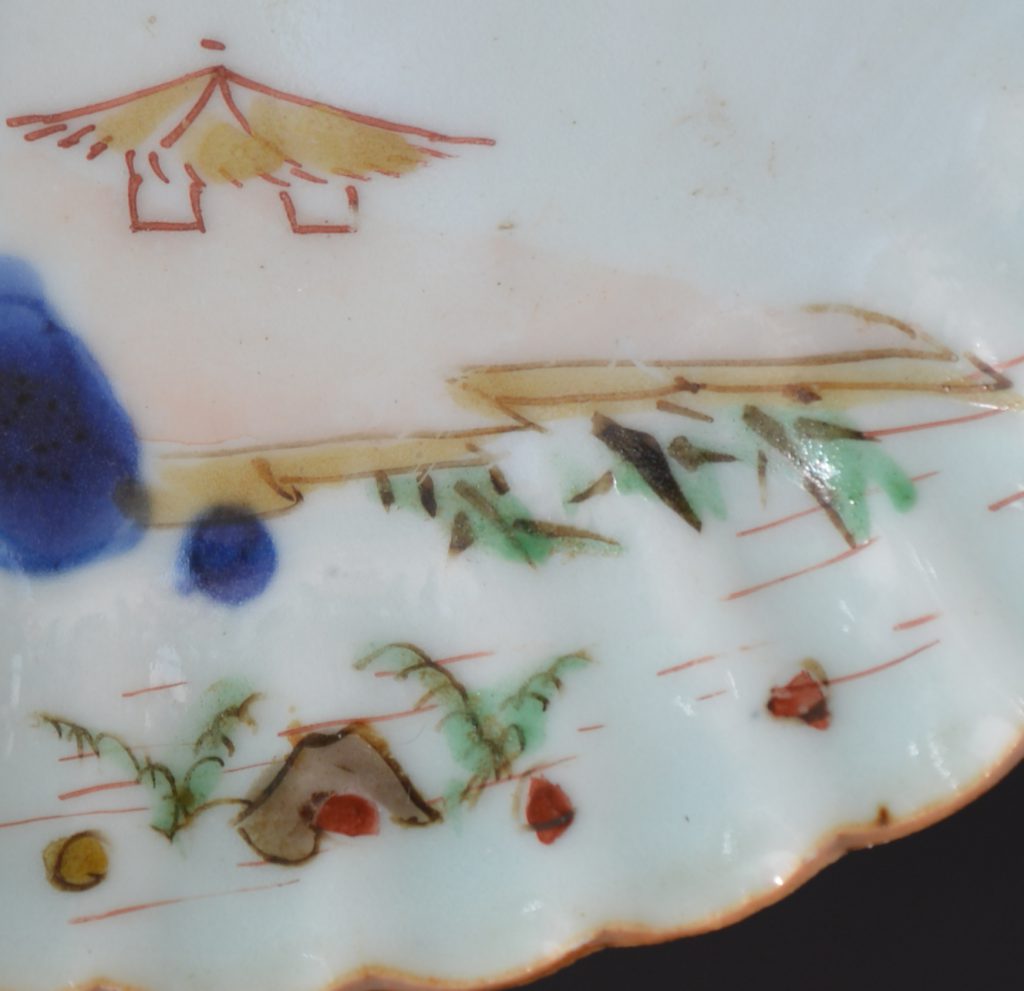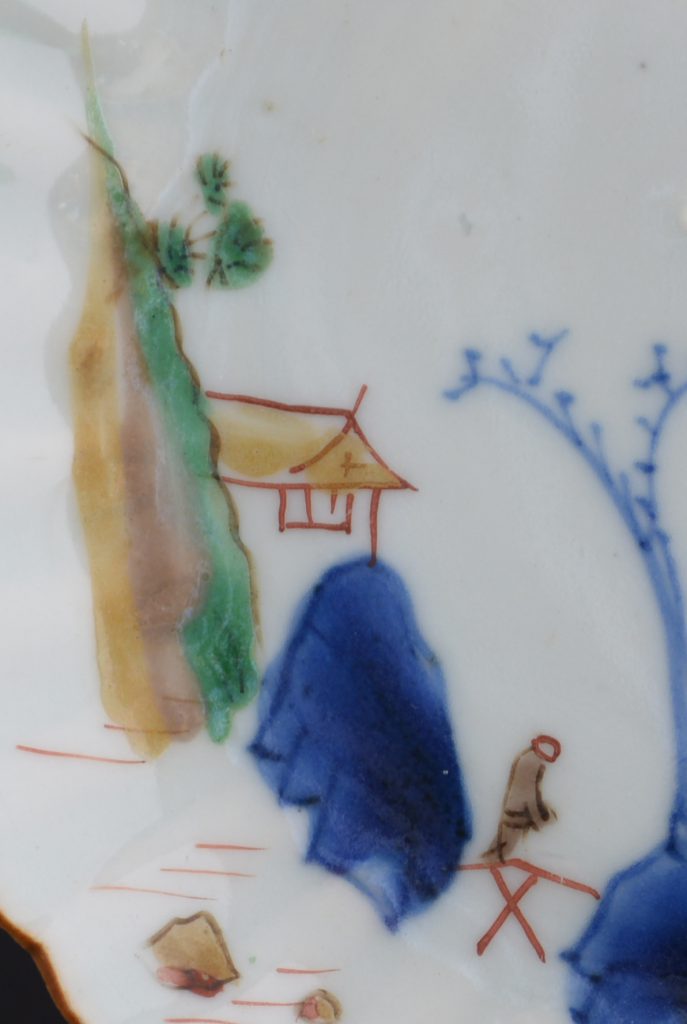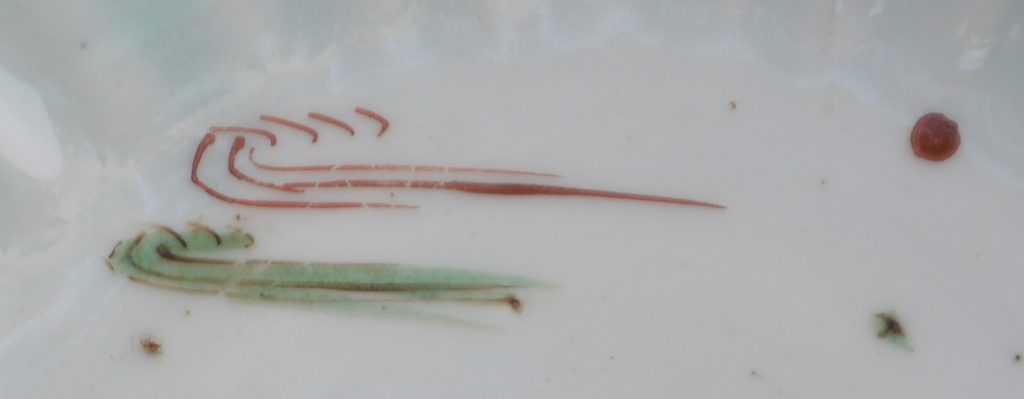
Tianqi or Chongzhen c.1620 – 1630. Transitional Porcelain Dish for the Japanese Market.
A Late Ming Porcelain Serving Dish Made for the Japanese Tea Ceremony, Transitional Period, Tianqi or Chongzhen c.1620-1630. The Scalloped Edge Dish Resembling an Open Flower is Decorated with a Scene of a Lonely figure Crossing a Bridge to a Small island with a Low Building. The Overglaze Red Mark is Fu (happiness/abundant joy).
SOLD
- Condition
- In very good condition, one frit to the brown rim 1x1 mm or less. Some wear to the island. The top of the dish has a small area without the brown rim, this is not damaged and is glazed.
- Size
- 15 cm (5 3/4 inches)
- Provenance
- From a Private English Collection of Blue and White Japanese and Chinese Porcelain.
- Stock number
- 24358
- References
- For two very similar dishes see : Exhibition of Transitional Wares for the Japanese and Domestic Markets, S.Marchant & Son, 11th - 30th June 1989. Page 57, plates 101 and 102.
Information
Ming Porcelain for Japan :
During the late Ming Period the Chinese made a large among of porcelain for the Japanese market, it was made from the Wanli period (1573-1620) and ended in the Chongzhen period (1628-1644), the main period of production being the 1620`2 and 1630`s. The porcelain objects produced were made especially for the Japanese market, both the shapes and the designs were tailored to Japanese taste, the production process too allowed for Japanese aesthetics to be included in the finished object. Its seams firing faults were added, repaired tears in the leather-hard body were too frequent to not, in some cases, be deliberate. These imperfections as well as the fritting Mushikui (insect-nibbled) rims and kiln grit on the footrims all added to the Japanese aesthetic. The shapes created were often expressly made for the Japanese tea ceremony meal, the Kaiseki, small dishes for serving food at the tea ceremony are the most commonly encountered form. Designs, presumably taken from Japanese drawings sent to China, are very varied, often using large amount of the white porcelain contrasting well with the asymmetry of the design.
Wucai :
Wucai means five coloured decoration. This consists of the overglaze enamel colours ; red, green, and yellow, underglaze cobalt blue and the white of the porcelain itself.





